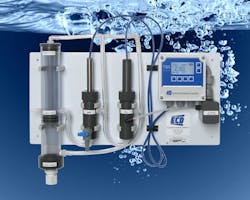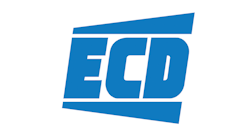The advanced modular TC80 total chlorine and FC80 free chlorine analyzers from Electro-Chemical Devices combine plug-and-play capability for fast setup, highly reliable accuracy and replacement sensor cartridges for economical maintenance
Both analyzers are compliant with U.S. Environmental Protection Agency method 334.0 for measuring drinking water. They feature heavy-duty three-electrode amperometric chlorine sensors with a gold cathode, silver halide anode and 304 stainless steel counter electrode. The counter electrode provides a stable base potential that minimizes drift.
The TC80 analyzer monitors total chlorine in drinking water, rinse water, cooling water or other fresh water samples. The measurement range is from 0.05 to 20 ppm chlorine as the standard range, or 0.005 to 2 ppm with the low range sensor.
The FC80 analyzer monitors free chlorine in drinking water, rinse water, cooling water or other fresh water samples. The measurement range is from 0.05 to 20 ppm chlorine as the standard range or 0.01 to 5 ppm with the low range sensor.
The plug-and-play T80 analyzer/transmitter and the TC80 and FC80 sensors install quickly right out of the box. The TC80 analyzer/transmitter’s advanced panel-mount design includes built-in flow control, which eliminates the need for complicated pressure regulators and rotometers. Connect the sample and drain lines, connect the power and outputs, and the system is ready to use. Built-in automatic pH compensation also eliminates the need for expensive reagents to reduce maintenance and life-cycle costs.
The T80 analyzer/transmitter is available with either 110- to 240-VAC or 24-VDC power. Parameters can be graphically displayed with user-defined line-, bar- or gauge-style graphs. The standard configuration has two 4-20 mA outputs, three alarm relays and a MODBUS remote terminal unit.



